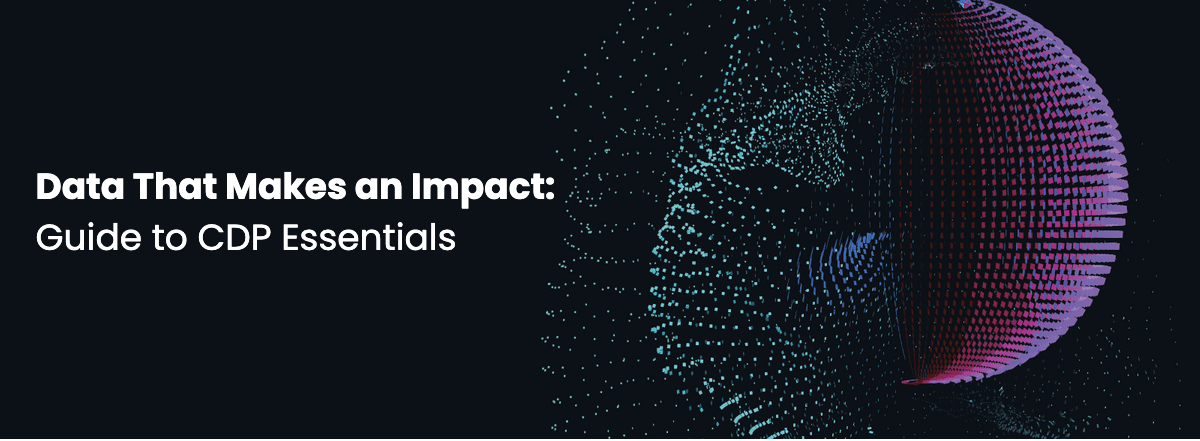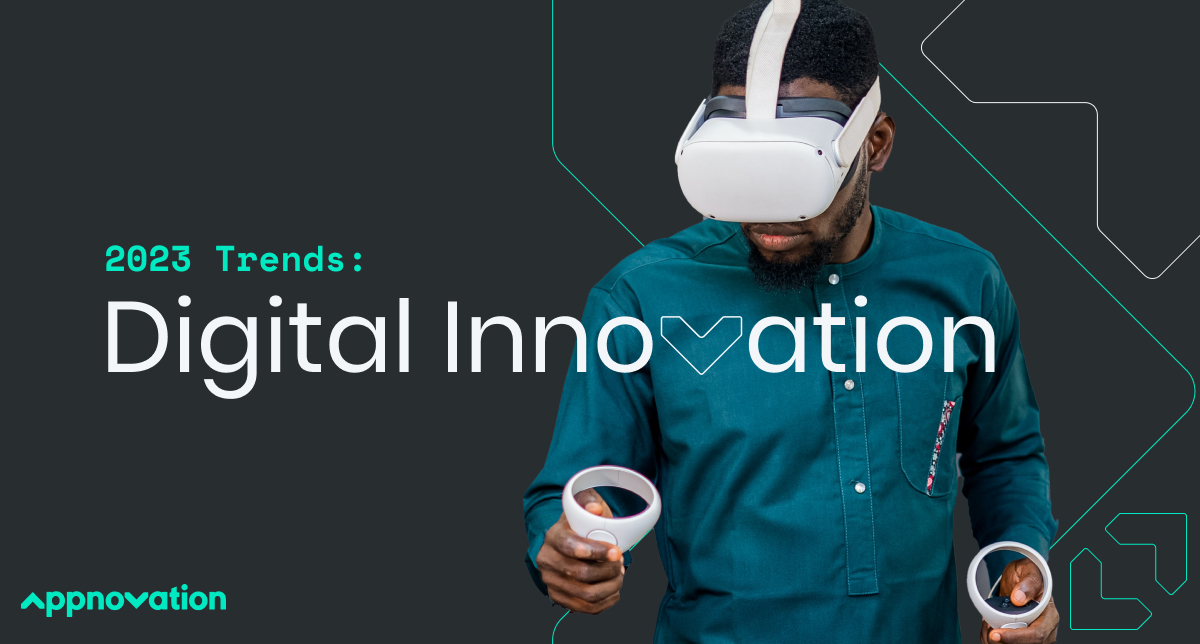This series explores the journey of becoming a business that harnesses the power of quality data to make informed business decisions. This final article explores how to increase growth and revenue with data monetization.
Becoming a data-guided organization is no small feat and definitely an accomplishment worth celebrating. But for those not content to rest on their laurels, there is a whole other world of data applications to explore.
Monetizing data through new products or services can be a practical way to realize additional business value. However, organizations still aren’t widely embracing the initiative. In a recent Insider Intelligence survey, only 30% of respondents intended to allocate budget to potential monetization work, and even then it was limited to scaling self-service data infrastructure.
Data monetization has the power to give companies a serious edge. Organizations that find new services and business models in which to use their existing data are more likely to become industry leaders.
Data Monetization Defined
There are effectively two categories of data monetization: direct and indirect. Both leverage data to deliver enhanced value to customers while also driving revenues for the organization, but they differ in their approach. We’ll delve into each, beginning with indirect, which is currently the more commonly used method.
Indirect Data Monetization
This approach is about using data to make the digital product more compelling for its intended audience without charging them additional fees, which is why it’s termed “indirect” monetization. It has a broad range of use cases, including:
- Acquisition
- Conversion
- Retention
- Engagement
- Adoption
- Competitive advantage
- Brand recognition
- Proof of value
The success of a digital product hinges on getting users seamlessly onboarded and actively using the platform. If you can’t accomplish that, customers will churn when the next payment date comes around. But indirect data monetization can help drive engagement. For example, when users log into an e-commerce app, it might display basic stats, such as the previous week’s sales and growth.
Indirect monetization is about using data to increase the digital product’s “stickiness.” The more reasons customers are given to use your platform — particularly within the first three months — the higher the likelihood is that they’ll remain a long-term customer.
Direct Data Monetization
Direct monetization goes beyond basic service or product offerings, unlocking existing data to create a whole new revenue stream for the business. This can be realized in a variety of ways, such as:
- Analytics and insights packages, as a value-add or surcharge offering
- API access
- Data as a service (DaaS) solutions
- Core offering bundles
- Premium subscription levels
While the strategy has been prevalent in APAC for quite some time, it’s less utilized in the rest of the world, with research indicating that only one in three organizations have explored the idea.
Businesses across a multitude of industries can benefit from direct monetization applications. This is particularly true for consumer product goods (CPG) companies, who often lack visibility into the specifics of their products’ sales performance. Some retailers have closed this gap by offering data analytics packages to their CPG vendors. The wholesaler, Costco, has a long-standing reputation for going a step further with their Collaborative Retail Exchange (CRX) platform. For a fee, Costco provides their vendors with category and segment data, giving them valuable insights on where they stand against their competitors.
Direct monetization can also be applied as a part of a B2C relationship. Website development company, Wix, have partnered with Looker to provide data analytics to their customers. The free version includes basic analytics, updated periodically. But users that upgrade to the paid premium plan gain access to more advanced analytics tools, updated in real-time, along with insightful reports and in-depth functionality. With that valuable information about their viewers’ engagement levels, Wix customers can quickly pivot as needed to readily meet the needs of their audience.
But what if your customer is an enterprise organization that doesn’t want to use your platform to visualize their data? Perhaps they’ve already made a substantial investment in their own business intelligence (BI) tool. In that case, products like Google Analytics enable you to share and monetize your data such that it can be accessed within your customers’ own systems.
There are also hybrid possibilities, in which your data and your customers’ data can be combined in a manner that delivers useful findings through various outputs.
This method allows customers to upload their data in any format and solidifies a long-term customer relationship, as they are an active participant in the process, both contributing to and benefiting from the data’s insights.
Modeling Financial Behaviors
Appnovation is working with a large financial services company whose dispersed offline and online customer metrics make it difficult for their banking and credit union clients to gain a holistic view of their customers. Together, we’re building a platform that will allow their clients to have a combined data set, expanding and simplifying their visibility of customers’ behavior.
Wade (don’t plunge!) into data monetization
Venturing into data monetization doesn’t require jumping straight into the deep end. Initiatives can be approached in phases. Data monetization is difficult to do well because it requires specific types of data. It’s worth taking the time to ensure the right pieces are in place before building out complex functionality. But as an organization progresses along in their data monetization journey and provides more advanced offerings, the value to their customers increases substantially.
Ditch the dashboards
Ideally, regardless of the purpose of a data platform, it should feel like a customer application, not just a typical business intelligence tool or spreadsheet. Customer experience is key, though this aspect of data monetization products tends to get overlooked.
These days, customers expect data platforms to have usability on par with a consumer focused app, such as the social media apps they use regularly. They want high-fidelity, visually-appealing experiences, not a bolted on analytics package. It’s not enough to have embedded reports or a selection of pie charts, especially if they aren’t providing a rich experience of meaningful insights. To do data monetization well, it must deliver genuine value.
Most users would rather engage with data in a way that’s easily digestible. It’s not enough to show a line graph depicting the percentage increase in sales since the previous month. What’s the story behind the numbers? How can these metrics be of most benefit to the user?
Unlocking customer value leads to unlocking revenue. This, as well, occurs in stages. From simply receiving insights, businesses can move towards gaining views across their omnichannel, then to having real-time updates, and finally to receiving recommendations to aid in making informed decisions.
Monetizing data effectively comes down to recognizing customers as human beings and bringing knowledge to them where they are. The time required for them to hunt for information should be as minimal as possible. Even better, save them the trouble of searching all together, and deliver what they need straight to their smart watch. Dashboards certainly have value, but they can’t be both the beginning and end of the journey.
Whether data monetization is new territory for your organization, or you’ve already dipped a toe in, it’s a concept worth exploring further. There’s no point letting data languish in storage systems when it can be put to use to create happier customers and increased revenues. It’s the ultimate win-win.
We hope you’ve found our Impactful Data series informative. To learn more about how to realize the full potential of your data, don’t hesitate to get in touch.
Download the series guide:

In this guide we cover the essentials of CDPs, including the difference between the two main uses of CDPs, the level of data cleanliness needed for each CDP use case, and the approach for using CDPs to collect first-party data.


